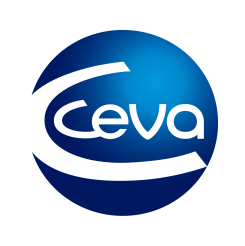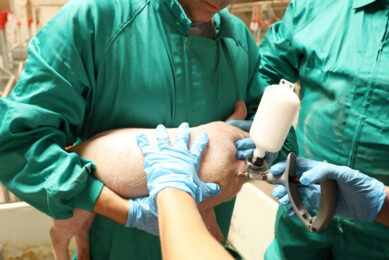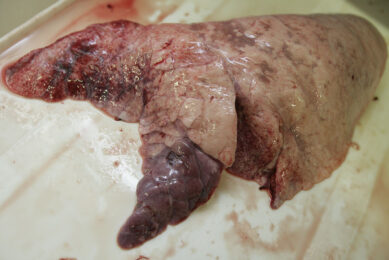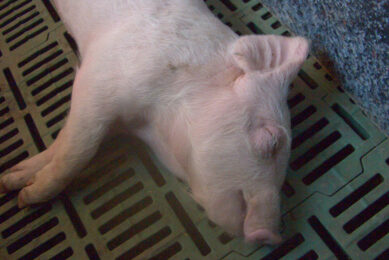IDA – an emerging problem in pigs
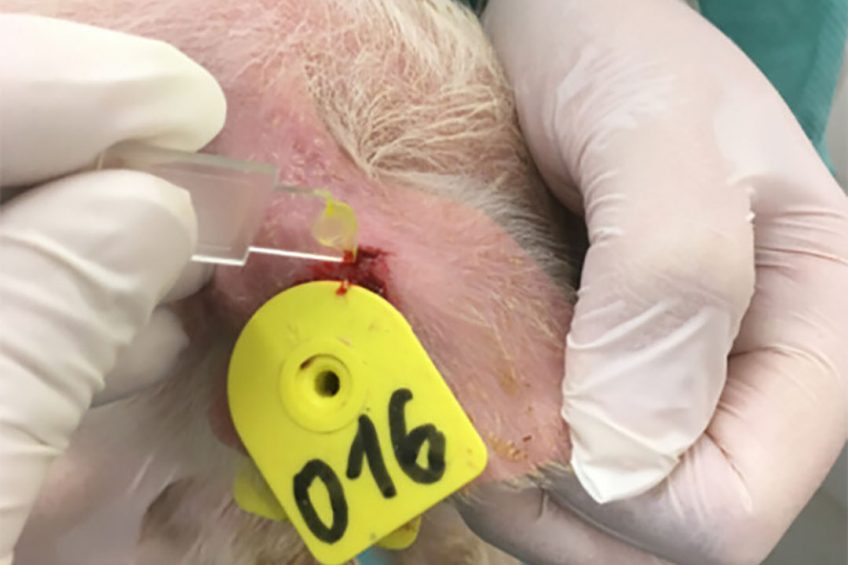
Iron Deficiency Anaemia (IDA) is a condition that is becoming a growing problem for young piglets, as the increase of litter sizes comes with low birth weights. What causes it exactly, and which strategies exist to overcome it?
It is well established that insufficient iron intake in suckling pigs results in iron deficiency or development of Iron Deficiency Anaemia (IDA). The pig is born with limited iron stores, and sow milk is a poor source of iron that provides piglets with only 1mg of iron a day. This amount of iron is not sufficient to support the rapid growth and expansion of blood volume during the first days of life. Therefore, piglets require exogenous iron supplementation within the first week after birth. The situation is even more complicated nowadays due to the very high productivity of pigs’ current genetics, with increased litter sizes, low birth weight and very fast postnatal growth. For example, in Denmark, the total number of piglets born per litter has increased from around 12 in 1992 to 20 piglets or more today.
The poor responsiveness of neonatal piglets to oral iron therapy is now well documented, and the inability of the immature duodenum to absorb iron may be the main reason. As a consequence, the most commonly used practice in field conditions is the intramuscular injection of 200mg of iron within the first three days of life.
Different dextran- or gleptoferron-based injectable products are available on the market. Gleptoferron is a macromolecular complex of beta-ferric oxyhydroxide and dextran glucoheptonic acid. The growth potential of current genetic lines has improved in recent decades, while iron dosage remains the same. Therefore, it is important to verify whether the routine iron supplementation protocols and products used today are still adequate to prevent iron deficiency and anaemia in modern pigs.
The product must be rapidly and significantly absorbed from the intramuscular injection site. If it is not, the iron is not available for haemoglobin synthesis and replenishment of iron stores (liver), and non-absorbed iron becomes fixed by the tissues with deposition in the connective tissue stroma and associated macrophages and possible unacceptable staining of the muscle. It is now well accepted that 90% of the injected iron should be absorbed within 72 hours post-dose to be effective. Differences in absorption levels between gleptoferron and iron dextran were reported for parenteral iron preparation.
The aim of this article is to provide information on the prevalence of IDA in weaning piglets in some important pig producing countries in the EU and to address the selected risk factors.
Prevalence of IDA in selected EU countries
A survey was conducted in ten EU countries (Denmark, Poland, Belgium, the Netherlands, Germany, Austria, the Czech Republic, France, Italy and Portugal). In total 3,048 piglets were included in the assessment of haemoglobin (Hb) levels at weaning at randomly selected farms that were willing to participate in the survey. Hb levels were measured using the portable analyser. HemoCue Hb 201+ is a pen-side, handheld device, providing a quick and simple assessment of Hb, with a very good correlation coefficient with the standard haematology analyser for sows and weaners (0.95 and 0.97, respectively).
At each farm, ten randomly selected litters from different parity sows were selected. The sow and three piglets (small, medium, large) from the litter were sampled. Additional parameters were collected in the form of a questionnaire (e.g. type of iron product, parity of sows). The current criteria for assessment of anaemia based on Hb levels were used:
- Anaemia: < 90g/litre;
- Subclinical status: 90–110g/litre; and
- Optimal Hb level > 110g/litre.
Results
According to current interpretive criteria, more than 14% of piglets were anaemic at weaning with significant differences between countries (see Table 1). The highest percentage of anaemic piglets was observed in Belgium and France (34% and 18%, respectively). Farms used oral forms of iron more frequently in both countries, and animals treated by different protocol-based oral forms were at higher risk of IDA.
Risk factors: Type of iron
Different products with different routes of administration (oral vs. injection) and/or different protocols (day of administration, combination oral plus injection) were used on selected farms for this study. The most effective iron supplementation protocol was based on the injection of gleptoferron, which leads to the lowest percentage of anaemic piglets at weaning (6.9%). The oral-administration-based protocols led to the highest risk of anaemia at weaning (see Table 2).
Piglets from first and second parity sows seem to be more at risk of IDA at weaning compared to higher parity sows, with IDA being confirmed in 17.4% of piglets from this particular subgroup. A trend of higher prevalence of IDA in piglets from old sows (parity six and higher) was also confirmed.
The fastest growing piglets were more frequently at risk of IDA at weaning when compared to their pen mates of medium and small size: 17% of large piglets were anaemic at weaning, compared to 12.2% and 14.0% observed in medium and small piglets, respectively.
Conclusions
IDA is a common problem on European farms, with 14.4% of piglets reported as being anaemic at weaning, and 49.64% of piglets considered to be sub-anaemic. Current iron management practice on pig farms seems to be insufficient to provide optimal levels of Hb at weaning, with differences in hematinic activity reported for different products. The best performing type of iron, based on the results of our study, was the gleptoferron iron type, where the percentage of anaemic piglets was significantly lower. Application via the oral route only seems to pose the highest risk for IDA development at weaning. Other less important risk factors were the size of the piglet and the parity of the sow.
All in all this confirms, as in other studies, that the best performing and fastest growing piglets within the litter are at the highest risk for IDA at weaning. Piglets from young sows (first and second parity) had the highest percentage of anaemic piglets at weaning, so special attention should be paid to these animals. The assessment of the hematinic status and Hb levels of piglets at weaning should be part of the standard diagnostic procedure on farms, and the level of intervention should be set up. IDA is a well-known limiting factor for the growth potential of current genetics and its negative impact has been well described. Pigs anaemic at weaning were 0.82kg lighter three weeks post-weaning than piglets that had normal Hb values, and an increase of 10g/litre of Hb corresponded to weight gain improvement of 17.2g daily during the three weeks post-weaning. IDA should be considered an emerging problem in the swine industry that requires attention.
References available on request
Authors: Dr Daniel Sperling, Laurianne Meppiel and Hamadi Karembe, Ceva Animal Health


